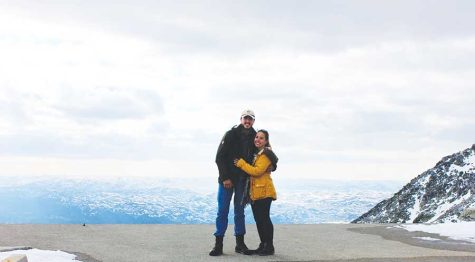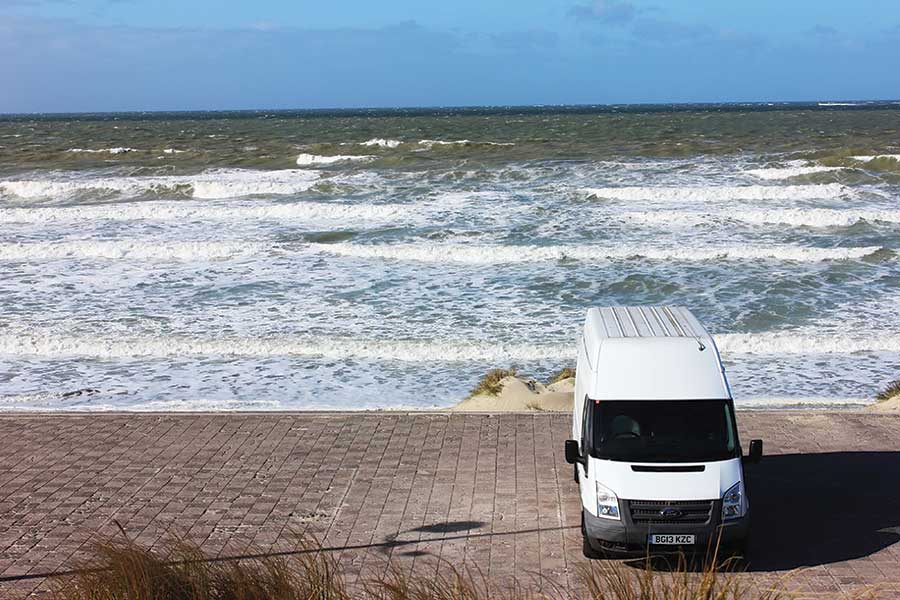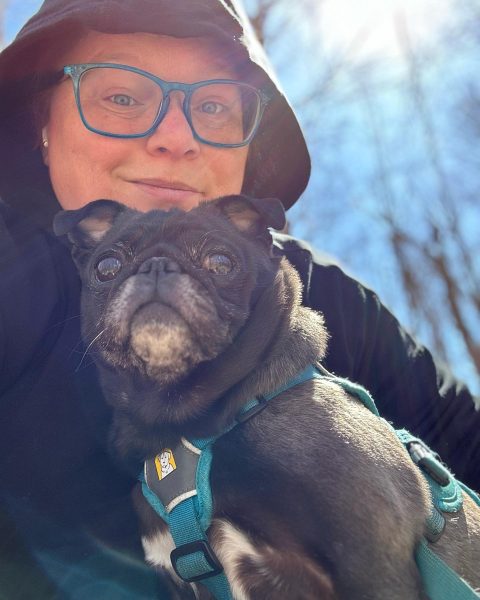Van-tastic Voyage
When you hear the word “van,” most people imagine an 8-seat tank of a vehicle that lugs a whole family to middle school soccer games and high school musicals. For some, however, a van is a home. In recent years, it has become increasingly popular for wanderlusting individuals to convert large vans into mobile homes to allow them access to the open road at any given moment.
Florida-based couple Luke Austin and Liz Villa spent a year overseas travelling across Europe in 2019 but are now back to the states and planning their next adventure.
Austin appears exactly as you would imagine a young man living out of a van to look- his beard is overgrown and scraggly, but not unkempt. He stands tall and somewhat thin, and his clothes are plain. Villa, however, is short and spunky. Her shoulder-length hair has bits of blonde throughout, but her roots are grown in from her time spent on the road. She often dons chunky sweaters and blue jeans, a staple for comfort.
“We looked at buying a van in the US and just travelling here, but they were so expensive,” says Austin. “We found one for cheap, but it was so rusty and gross.” The cost of transporting a van overseas would have also severely hiked up the price of the project and complicated things further.
“We decided in June 2018 that we wanted to travel in Europe,” continues Austin. “We booked a ticket to England then for December 2018 and started to build the van in March 2019. We didn’t really do much preparing, though, aside from mentally.”
In just the six months between the decision and the temporary move, the couple saved up their money and Villa even sold her car to fund the adventure, since she wouldn’t be needing it for a while. They ended up finding a 2013 Ford Transit across the pond in England.
“We worked on the van at my Nan’s in Burntwood,” says Austin. The brick home was located at the end of a cul-de-sac, surrounded by forest, which should have offered some privacy while they worked. “We’d wave at the neighbors every day, but never actually spoke to them,” continues Austin. “They’d peek at us through the windows all day.”
Van influencers have been popping up across YouTube and Instagram, and even TikTok as of lately. Canadian YouTubers Eamon Fitzgerald and Bec Moroney have spent years documenting their van travels, from trips across all of North America, to overseas journeys in Europe and Asia. More recently, they have also been renovating a remote cabin.
“We liked to look at people who didn’t do this for a living,” says Austin. “Because these people are going to tell you the truth about the process and the products. We looked at people with maybe 500 followers, because they’ll be honest about the mistakes they make. If they mess up, they fess up to it and show what they did wrong.”
Since more popular van influencers are often sponsored by companies and do not want to risk discrediting themselves by showing their mistakes, their opinions can sometimes be skepticized.
“We went with the bare essentials, which is insulation, a bed, and a small kitchen counter,” says Villa. “I would’ve liked a better cooktop, since we just had a charcoal bbq grill. But we didn’t really need anything else.”
Some van buildouts include running water, and some even have showers and toilets, although using water tanks can be complicated, especially in the colder seasons. Some vans have showers installed on the outside of the van for hosing off after a day at the beach.

“We didn’t install heat or running water,” says Austin. “We went really basic with just two benches and a table in between that came down to make a bed. We knew we wanted all wood for our interior, though.”
After travelling for three months, Austin and Villa headed back to England to recoup with Austin’s family and make any necessary changes for the coming warmer seasons.
“We realized we were overall pretty happy and didn’t need to add much,” says Austin, “but we did want to install a roof vent since it was starting to heat up outside. My grandpa was a huge help with this, and with all of the installation. But we were okay with just stopping at rest stops and gas stations to use the toilet and shower, so we decided not to add those in.”
Some “van lifers” take advantage of rest stops that offer showers and bathrooms, while others utilize gym memberships to do their hygienic rituals.
“I did miss hot water, though,” added Villa. “And clean toilets. I didn’t really need them, but I missed them.”
For schoolie-living couple Shane and Emily Anderson, however, a shower was a necessity. They travel across the United States in their decked-out school bus with their two small children, playing small concerts across the country.
“It was really helpful for us that we lived in the RV for four years,” says Shane, “because by living that lifestyle already on the road, we knew that we wanted two showers because showers were important to us.”
Prior to living in their bus, the Andersons lived in a factory build RV. “We did the RV for four years and the school bus for two so far,” says Shane. “It’s way cooler if we could design it ourselves. I love the idea of building out something that was just catered strictly to us because the RV was just, they’re not built with your lifestyle in mind.”
“And so we had to either buy a new RV,” says Emily, “which was going to be like 60 to $100,000, and by the time we paid off like 10 grand, it would have started falling apart and then we’d have like $90,000 to pay off. So for us, we bought the school bus and converted it and everything for probably around $20,000 And I would say that was financially the best move.”
For Villa and Austin, however, the cost of their van off the lot was roughly $10,000, plus about 500 pounds (700USD) in building materials. “We didn’t spend nearly as much as we’d planned,” says Villa.
Austin and Villa averaged about 160 euros (180USD) a week on diesel when travelling, and they spent roughly 20 euros (22USD) per person per day on food.
“We went to ALDI twice a week to get lots of fruits and such, and then we would go to a fast-food place every couple of days,” says Villa. “They’re cheap and usually have internet. We used the internet to upload photos to social media for family to see.”
Free internet is a luxury that many vans do not offer their occupants. While it is possible to install it, the cost can get expensive for people who do not need it to work.
Austin and Villa, however, spent most of their time outside of the van, since they did not have traditional jobs. Villa runs her own photography business, from which she took a break during their travels, and Austin was in between jobs during this period.
“We would wake up and make breakfast, so we would spend about 30 minutes to an hour there in the morning,” says Austin. “If weather permitted, we would leave for the day and wouldn’t come back to the van until it was dark. There were only maybe a handful of days we had to stay in the van because it was raining, and we were in the middle of nowhere.”
Travelling from country to country allowed for a new array of activities each week. “The museums and such would only cost a couple euros, so we didn’t spend much other than food and diesel,” says Austin. From museums to hiking, even to just wandering around a city, there are cheap options for entertainment just about everywhere.
“Otherwise, we would find a coffee shop or something and take the laptop, the tablet, a book,” says Villa. “We would just spend the day there instead of in the van.” Despite the van being built for living, it was still a confined space for two people to spend an entire day.
“We built the van to only really be a place to sleep and a way to get around,” says Austin. “Being in a van allowed us to get to smaller towns and more rural areas that a train or bus wouldn’t allow.”
While travelling to this extent isn’t practical for everybody, getting out of your comfort zone and exploring a new place can enhance your outlook on life.

First year student from Orlando, FL.
Working on her second bachelors.
Love poetry, anime, and her dog (mostly her dog).
Dreams of living in a van.






